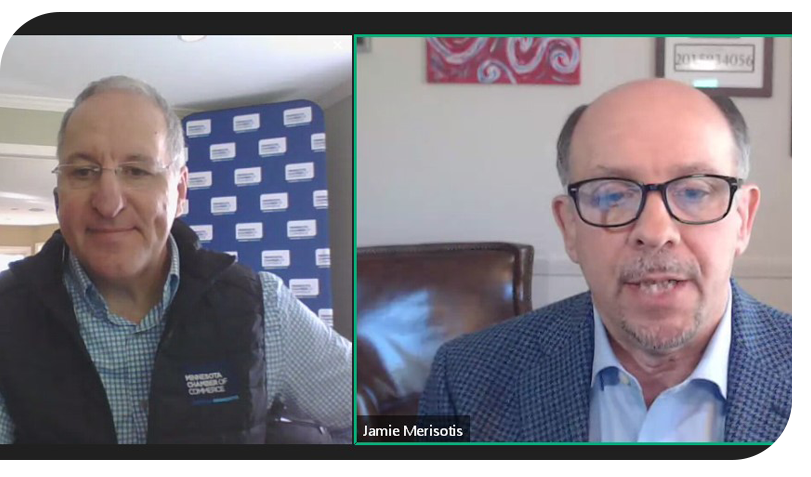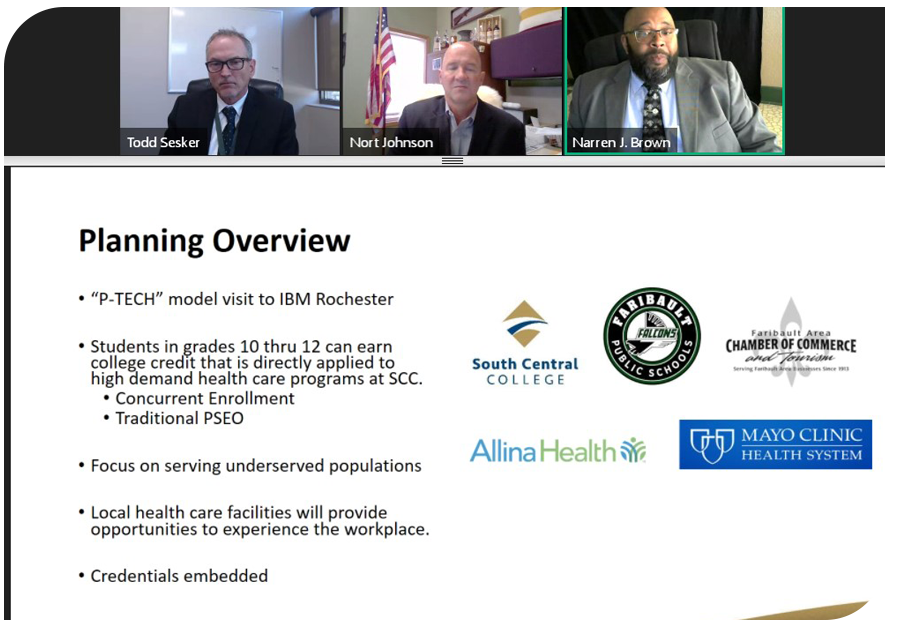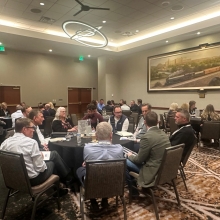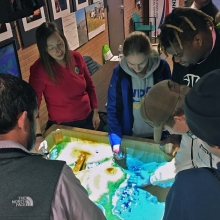Minnesota business leaders lay out solutions to workforce challenges
Workforce: A persistent challenge takes innovative solutions
Recently, the Minnesota Chamber held its annual Workforce Solutions Forum to talk about a fundamental challenge that faced employers for years before the onset of the COVID-19 pandemic and is likely to continue long after: workforce. The Minnesota Chamber Foundation’s Center for Workforce Solutions is a business-led initiative to ensure employers and employees possess the necessary tools for jobs of the future. Workforce moves far past admiration of workforce challenges. We focus on innovative solutions; to fill positions now and to change the long-term process that can develop a pipeline of workers and meaningful employment in Minnesota for generations to come.
How can the private and public sectors innovate to address workforce challenges? Here are some tips from national and local experts:
Putting the individual at the center of learning and training
Jamie Merisotis keynoted the Workforce Solutions Forum to touch on how his organization - the Lumina Foundation - is working to design an affordable, new learning landscape that is easier to navigate, especially for people of color who often encounter barriers to success in existing education systems. He is a globally-recognized leader in philanthropy, education, human work and talent development, and public policy.
Jamie laid out the problem facing Minnesota employers. "I think it's clear that we have a tale of two Minnesotas. In the 35 years from 1970 to 2004, Minnesota job growth outpaced the national average in 27 of those years, the GDP growth followed. But since 2005, GDP and job growth had been running at barely one-third of their previous pace. Population in labor force growth have slowed and are projected to keep slowing. And as the Minnesota: 2030 framework makes clear, Minnesota needs more people available to work. And even as the state's population is becoming more racially and ethnically diverse, Minnesota's racial achievement gaps are among the worst in the nation."

Jamie Merisotis with Chamber President Doug Loon at the Chamber's Workforce Solutions Forum
So what can Minnesota do now to help businesses find workers to fill open jobs and help the economy thrive?
"The days of performing the same job, the same way for much of one's career are over. Workers today not only need some education after high school, they also need to frequently re-skill and up-skill. We need a system that puts the individual at the center. One that focuses on learning rather than education, the individuals rather than the institution and on work rather than jobs. The good news is a growing number of businesses get it."
Who's doing it well?
A shining example of both solving the workforce shortage while also helping close the achievement gap is the partnership between Atomic Data and Summit Academy. The goal of the program is to diversify the Twin Cities’ I.T. workforce and help address the staffing shortage issues within the field. A partnership between Jim Wolford, CEO and Co-Owner of Atomic Data and Louis King II, President and CEO of Summit Academy is creating real-world results.
"I was not getting a lot of what I would call qualified people showing up to the job interview," said Wolford. "They didn't have a post-secondary education and I was having to invest a lot of money in training that I thought went well above and beyond what I should be doing...I started reaching out to Louis because if I was going to spend that much money training people, I wanted to actually get more out of it and I wanted to do better by our community with it."

While Minnesota has outpaced the national average in many categories such as fewer people in poverty, higher incomes per capita and higher educational achievement – this is not true for many of Minnesota’s communities of color. Doing better in the community means not only addressing the workforce shortage but also closing Minnesota's achievement gap.
"Louis has a whole population of people that have been underrepresented undereducated, and have really not been given the opportunities that we all want them to get," said Wolford. "And Louis put together a program with his amazing staff. He's got a doctorate in education and human development on staff, and they put together a program that really has allowed us to reach deep into the community to build our own education programs around what we want to see and really make an impact."
What's the secret to the program's success?
"The Atomic Data model works because A) it's short and B) we don't give them candidates who don't meet the standards. We bring people up to standard in 20 weeks. Once folks see others getting jobs then they come through our program fully expecting to join that group. And that's how you began to get success because the early adopters go on to tell others that this is a good place and a safe place. And because of this, we've been able to expand the partnership to other companies."
Local private-public partnerships making an impact
The Faribault Area Chamber is a partner in the Minnesota Chamber Foundation’s Business Education Network. In January, they kicked off a new program to bring together key leaders to build career pathways called H2C – High School to College and Career. This program allows high school students to acquire the academic, technical, and workplace skills that employers need and was created with the help of the business community, K-12 and higher education leaders. These program leaders shared more details of H2C and the goal of preparing students for careers after school.
Faribault public schools, the Faribault Area Chamber and South Central College are working together to both train and educate students for a career.
"We got the high school and our public school system talking with our community college system," said Dr. Mike Richie, a founding member of the Faribault Chamber of Commerce Vision Task Force. We brought people together. We brainstormed ideas and eventually over the matter of a couple of years, that led to the program that we call H2C, which incorporates some of the college-level training, in particular, workforce training and we bring that into the high school so that kids can get exposed to it at an earlier age, they can set a path and that is a pathway that leads to success."

Faribault schools offer expanded pathways and electives to allow high school students to explore potential career paths. The H2C program and connection with South Central College take this one step further for students.
"It expands the offerings for our students and allows us to create different pathways," said Todd Sesker, Superintendent, of Faribault Public Schools. "Examples of those pathways right now that we have in our human relations track, we actually have an education pathway for students to see if they actually want to go into education. We have a business pathway. Our school district has one of the best DECA programs in the state of Minnesota. And more recently, we have now created this H2C pathway with the help of our partners, including South Central College."
"It's a collaboration between the college, individual business, groups of businesses, the chamber, economic development organizations, industry partners, as many as we can bring into the model to improve regional competitiveness," added Dr. Narren Brown, Vice President of Research and Institutional Effectiveness/Dean of Faribault Campus at South Central College. "To help our students earn a sustaining, a family-sustaining wage and prepare them for a future."
This program is part of the Chamber's Business Education Network: a partnership with local chambers that creates solutions customized to the workforce needs of specific regions. Click below to learn what other communities are doing to train the next generation of employees and close the workforce shortage.
Minnesota: 2030 identifies workforce challenges, solutions for the next decade
Recently, the Minnesota Chamber Foundation released Minnesota: 2030 – A framework for growth. This ambitious report provided an analysis of Minnesota’s economy, providing more than 50 recommendations for growing our state’s economy in the next decade and beyond. One of the major themes of that report was workforce – attracting and retaining workforce through domestic migration, and immigration; leaving no one on the sidelines and making workforce inclusion a strength of the state economy; and ensuring workers have the skills they need for a rapidly changing economy, one that will require lifelong learning.


